There are countless Native American remedies that we still use today.
If you’ve ever brewed a cup of mint tea to calm an upset stomach or put some lavender essential oil on your pillow to help you sleep a bit better, then you’re already familiar with many of them.
However, there are also a few Native American remedies that have fallen by the wayside. Here are some of the most interesting.
1. Rosemary
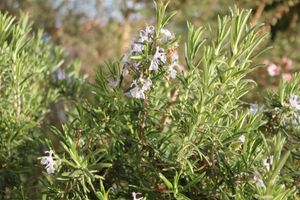
Rosemary is an herb that most of us have in stock in our kitchens. But did you know that some Native American tribes actually considered this plant to be sacred?
Related: Scientists Find Smelling Rosemary Can Increase Memory By 75%
It was often eaten to improve memory and relieve muscle pain but could also be used as a topical medicine to soothe sore joints.
To make a healing balm, add 40 drops of rosemary essential oil to ½ cup of coconut oil and ¼ cup of olive oil. Use as needed.
2. Sumac
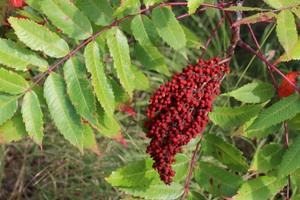 Sumac is a shrub and small tree that is found in most places within North America. Many parts of the plant, from the berries to the leaves, were used by Native American tribes.
Sumac is a shrub and small tree that is found in most places within North America. Many parts of the plant, from the berries to the leaves, were used by Native American tribes.
Believe it or not, it is one of the few that Native Americans used to address eye problems.
In addition to treating vision issues and eye discomfort, sumac was also used in a gargle to relieve sore throats and as an ingested treatment to stop diarrhea.
It could also be used as a poultice to alleviate the itching and discomfort from poison ivy rashes.
To use as an ingested treatment, add a handful of berries to two cups of cold water. Let it sit overnight in a cool place – don’t heat it or it will become bitter. Drink as needed.
3. Blackberry
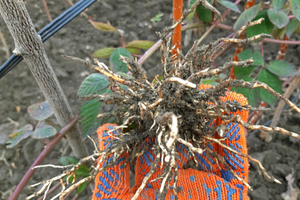 You’re likely already aware of how delicious the fruits of blackberries are – especially in jams or pies. But what you might not know is how other parts of the plant also have healing powers, making it one of the top Native American remedies.
You’re likely already aware of how delicious the fruits of blackberries are – especially in jams or pies. But what you might not know is how other parts of the plant also have healing powers, making it one of the top Native American remedies.
Related: The Native American Foods That Cherokees Ate During Hard Times
Blackberry root can be mixed with honey or syrup to heal a sore throat, while the leaves of the plant can be chewed to heal bleeding gums.
Blackberry leaves can also be dried and used to make a soothing tea that helps with digestive issues like diarrhea or upset stomach. This tea is rich in tannins, which have astringent properties that can tighten tissue and reduce inflammation, making it a useful remedy to keep on hand for minor gastrointestinal discomfort.
4. Red Clover
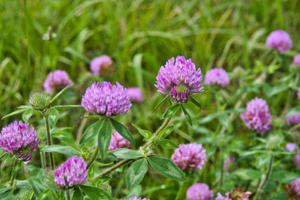 Considered a weed by many, red clover was highly valued by many Native American tribes. It was used to treat inflammation and various respiratory problems.
Considered a weed by many, red clover was highly valued by many Native American tribes. It was used to treat inflammation and various respiratory problems.
Combine 1 tsp red clover flowers with a cup of boiling water and honey, to taste, to make a tea. Drink as needed.
Red clover is also known for its gentle detoxifying properties, especially in supporting lymphatic function and promoting clearer skin. Many herbalists use it in spring cleanses or to help the body naturally eliminate waste more efficiently. With its mild, sweet flavor, it’s an easy herb to incorporate into your wellness routine.
5. Cattails
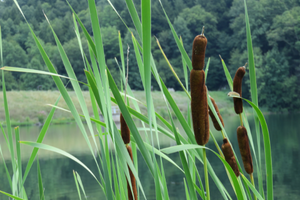 Cattails are found just about everywhere. So it should be no surprise to see it listed as one of the top Native American remedies.
Cattails are found just about everywhere. So it should be no surprise to see it listed as one of the top Native American remedies.
As long as there’s water, you’re likely to find cattails.
Cattails were used as a major food source by many tribes but were also used to prevent a variety of illnesses, including respiratory ailments.
Harvest cattails in the spring. Discard the outer two leaves and eat the inside – you can eat the entire inner core of the cattail and it offers medicinal benefits.
6. Buckbrush
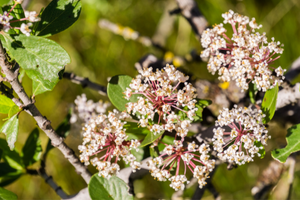 Several Native American tribes reportedly used buck brush to treat cysts, tumors, and inflammation. It was one of the really important Native American remedies of the past.
Several Native American tribes reportedly used buck brush to treat cysts, tumors, and inflammation. It was one of the really important Native American remedies of the past.
It could also treat sores, wounds, and various mouth and throat conditions.
Once a substitute for black tea, it has now more or less fallen by the wayside.
To make a tea, combine one cup of boiling water with 2 tsp of ground buck brush. Heat and drink as needed.
7. Yarrow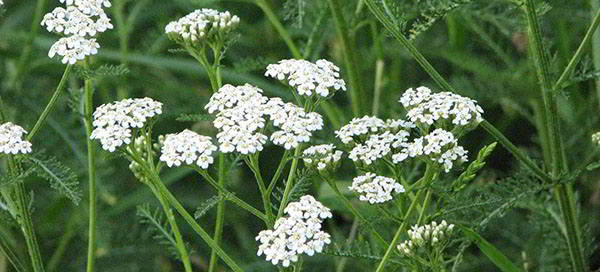
This fragrant, flowering plant has been used since Ancient Greece began using to stop excess bleeding. It is said the Greek hero Achilles used it on his wounds, hence the name. Pioneers and aboriginal people applied this on open wounds and cuts as a poultice made from the leaves to help clot the blood. They also combined fresh yarrow juice with water to help an upset stomach and for intestinal disorders. A tea made from the leaves and stems will act as an astringent.
Yarrow can also be used to help lower fevers by promoting sweating. Drinking a warm infusion of yarrow tea when you’re feeling under the weather may help break a fever naturally. In addition to its internal uses, yarrow’s anti-inflammatory and antiseptic properties make it a handy addition to salves or oils used for skin irritations, rashes, and insect bites.
8. Greenbriar
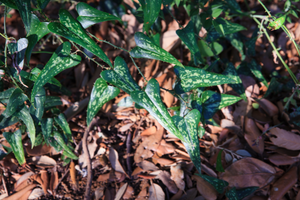 The roots of the Greenbriar plant, also referred to as “pull out a sticker” were often used in a poultice to relieve joint pain.
The roots of the Greenbriar plant, also referred to as “pull out a sticker” were often used in a poultice to relieve joint pain.
The Greenbriar plant could also be processed by the Native American tribes into a salve that was applied to treat sores and burns.
Harvest leaves and allow them to wilt by heating them briefly on the stovetop. Apply the cooled leaves directly to the skin to relieve joint pain.
9. Saw Palmetto
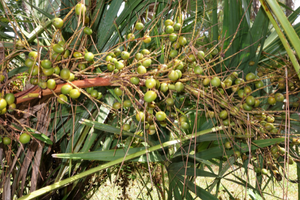 The Native American tribes of Florida – including the Seminole – once used the saw palmetto plant for food. However, it was also valued as a treatment for abdominal pain, indigestion, and inflammation.
The Native American tribes of Florida – including the Seminole – once used the saw palmetto plant for food. However, it was also valued as a treatment for abdominal pain, indigestion, and inflammation.
Related: How To Use Milk Thistle For Inflammation
To make a saw palmetto tea, combine 2 tablespoons of berries with 1 cup of hot water.
Saw palmetto is still widely used today, especially for supporting prostate health and balancing hormones in both men and women. Modern herbalists often recommend it as a natural remedy for urinary tract issues and to reduce symptoms of an enlarged prostate. While the taste of the berries can be strong and bitter, many believe the benefits make the tea worth it.
10. Wild Rose
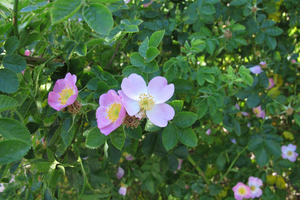 Very few of us grow roses for anything beyond their ornamental value – they’re beautiful to look at. However, the petals from a wild rose can also be used to treat a sore throat and as a diuretic.
Very few of us grow roses for anything beyond their ornamental value – they’re beautiful to look at. However, the petals from a wild rose can also be used to treat a sore throat and as a diuretic.
To make a wild rose tea, combine 1 tablespoon of young rose buds with a cup of boiling water.
Wild rose hips, the fruit that forms after the petals fall, are also incredibly rich in vitamin C and antioxidants. These can be dried and brewed into a tea that supports the immune system, especially during cold and flu season. Native tribes often relied on rose hip tea to ward off illness in the winter months when fresh food was scarce.
11. Slippery Elm
The slippery elm is a plant with many applications, particularly to Native Americans.
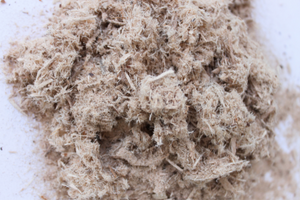
Its fibrous inner bark was used to make materials like thread, rope, bowstrings, and even clothing.
However, medicine men also used the slippery elm leaves and bark to make a tea that could soothe sore throats, stomach aches, and a long list of other conditions as well.
Make a slippery elm tea by combining 1 tbsp of powdered bark with a cup of boiling water along with 2 oz of coconut milk and 1 tbsp blackstrap molasses (for better flavor). Stir well and enjoy!
12. Ashwagandha
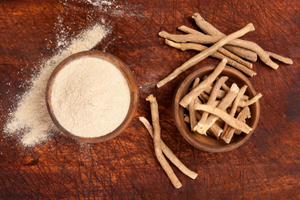 An uncommon plant, ashwagandha has many medicinal uses. It was once used to treat bone and muscle weakness along with rheumatism, memory loss, and, oddly enough, loose teeth.
An uncommon plant, ashwagandha has many medicinal uses. It was once used to treat bone and muscle weakness along with rheumatism, memory loss, and, oddly enough, loose teeth.
Because ashwagandha has a rejuvenating effect, it is often used to provide energy.
If you decide to give this remedy a try, exercise caution – it can be toxic.
Grind ashwagandha root to a powder. Combine ½ teaspoon of the powder to a ½ cup of milk and 1 cup of water. Bring to a boil, allow to cool, then drink. Do not consume more than one serving per day.
13. Black Gum Bark
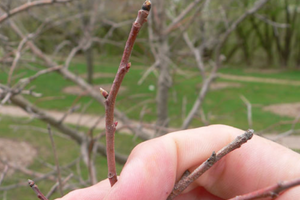 Although this tree isn’t common, Cherokees once used the bark and twigs to make a mild tea that could relieve chest pains.
Although this tree isn’t common, Cherokees once used the bark and twigs to make a mild tea that could relieve chest pains.
Combine 1 tsp of crushed bark or twigs with a cup of boiling water. Sweeten to taste with honey. Drink as needed.
This same tea was also believed to help with nervous tension and anxiety, providing a calming effect without sedation. Some traditional healers used it to ease insomnia or restlessness, especially during times of emotional stress or grief. Today, it’s still valued in herbal medicine circles for its gentle, soothing properties.
14. Mint
The Cherokee used to make a mint tea to soothe digestion problems and help an upset stomach. They also made a salve from the leaves to relieve itching skin and rashes.
Mint was also inhaled as a steam to help clear the sinuses and relieve symptoms of colds or respiratory infections. The strong menthol scent worked to open nasal passages, ease headaches, and provide a sense of calm and focus during illness or fatigue.
Additionally, mint leaves were sometimes chewed fresh to ease nausea or freshen breath. The Cherokee valued mint for its versatility. it was both a reliable remedy and a refreshing addition to food and drink. Its cooling, calming effects made it a staple in many traditional preparations.
15. Sage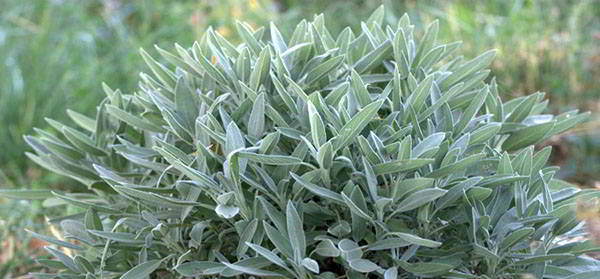
Sage is commonly used as a spice, but it was a sacred plant for many indigenous tribes as it was thought to have effective purifying energies and to cleanse the body of negative energies. As one of the Native American remedies, it was used for treating medical conditions like abdominal cramps, spasms, cuts, bruises, colds, and flu.
Sage was also commonly burned in smudging ceremonies to purify living spaces and drive out illness or negative spirits. Medicinally, a tea made from sage leaves was used to soothe sore throats, reduce inflammation, and ease digestive discomfort. Its antimicrobial properties made it useful for cleaning wounds and promoting faster healing. For many tribes, sage wasn’t just medicine. It was spiritual protection and physical remedy in one.
16. Wild Ginger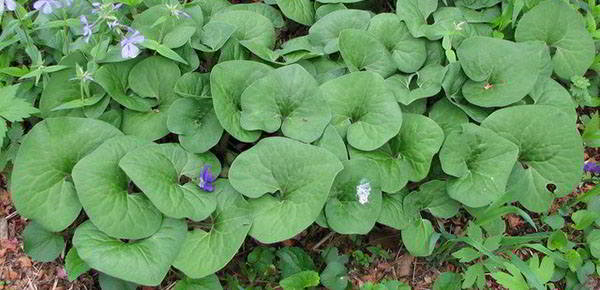
Healers used this plant for treating earache and ear infections. They also made a mild tea from the rootstock for stimulating the digestive system and relieving bloating. It also helps with bronchial infections and nausea.
The rootstock was often dried and stored for year-round use, then steeped into tea during the winter months when bronchial infections were more common. This tea not only soothed coughing and congestion but was also used as a mild expectorant to help clear mucus from the lungs.
In addition to its internal uses, poultices made from the crushed root were applied externally to reduce swelling and ease muscle aches. The plant’s broad range of healing properties made it a staple in traditional medicine kits, especially during cold seasons or when food scarcity led to digestive upsets.
Update: One of our readers sent us original pictures of wild ginger to help people identify the plant easier. (Photo credit: Erik Nielsen, Rational Design Studio)

17. Lavender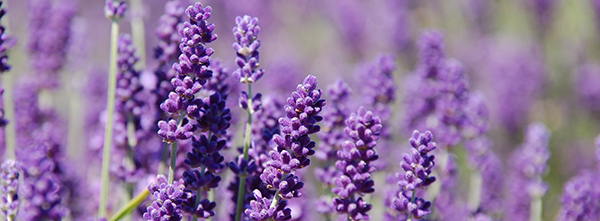
This plant was often brewed into a calming tea, especially before bed, to help quiet the mind and body. Many traditional healers recommended it for those who struggled with chronic worry, restlessness, or seasonal depression, making it a natural choice for emotional and mental balance without harsh side effects.
Beyond its mental health benefits, the plant’s oil or infusion was commonly applied topically to irritated skin. Just a few drops of diluted oil could bring relief from painful bug bites, while cool compresses soaked in the infusion helped reduce inflammation and discomfort from minor burns, scrapes, and sun exposure. Its versatility made it a trusted ally in both physical and emotional healing.
18. Honeysuckle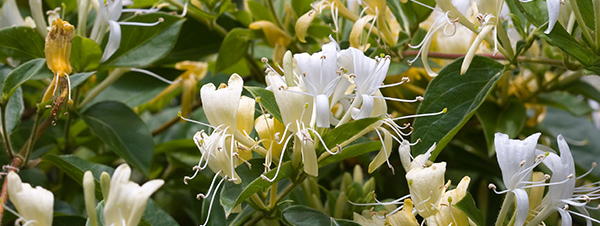
Traditional healers valued this plant not only for its respiratory benefits but also for its powerful anti-inflammatory properties. It was often prepared as a tea or poultice to ease the pain and swelling associated with rheumatoid arthritis, providing much-needed relief for those suffering from chronic joint discomfort. Its antiviral qualities made it a key ingredient in treating viral infections like mumps and hepatitis, supporting the body’s natural healing processes.
In cases of upper respiratory tract infections such as pneumonia, this plant was a trusted remedy to reduce inflammation and promote easier breathing. Its soothing effects helped calm irritated airways and boost immune response, making it an essential part of many indigenous healing practices. The versatility and potency of this plant demonstrate why it remained a cornerstone of traditional medicine for generations.
19. Mullein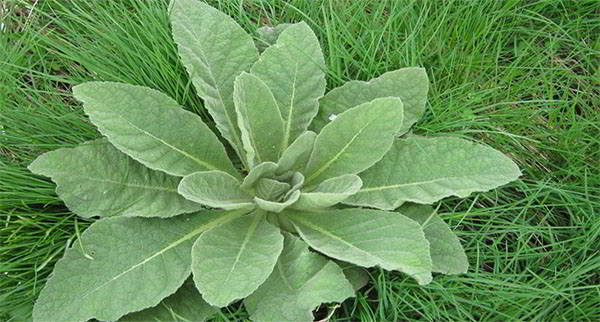
This tobacco-like plant was highly valued for its effectiveness in treating various respiratory disorders, including coughs, bronchitis, and congestion. Native Americans used its leaves and flowers in teas and smokes to open airways and soothe irritated lungs, helping ease breathing difficulties naturally. Its calming properties made it a go-to remedy during times of illness involving the respiratory system.
In addition to respiratory benefits, the roots were prepared into poultices or decoctions to reduce swelling and inflammation in joints, feet, and hands. This made it a versatile plant for addressing both internal and external ailments. If you want to learn more about the wide range of medical uses for mullein, check out this detailed resource here.
20. Licorice Root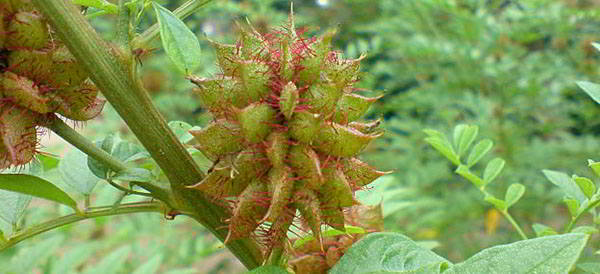
This root is famously used for flavoring candies, foods, and beverages. But it has also been used by healers to treat stomach problems, bronchitis, food poisoning, and chronic fatigue.
The Native American medicinal plant is famously known for flavoring candies, foods, and beverages, adding a sweet and distinctive taste. Beyond its culinary uses, traditional healers have long valued it for treating a variety of health issues, including stomach problems like indigestion and nausea. Its soothing properties make it an effective remedy for calming the digestive system naturally.
Additionally, this root has been used to help with respiratory conditions such as bronchitis, easing coughing and inflammation. It’s also known to support the body during times of chronic fatigue, helping to restore energy and vitality. Its combination of medicinal and flavorful qualities makes it a unique and valuable plant in natural healing.
21. Uva Ursi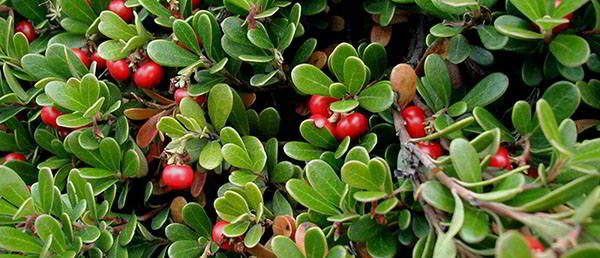
Because of the bear’s affection for this plant’s fruits, it is also called Bearberry or Beargrape. Though less well-known today, this plant was a valuable part of Native American medicine. It was primarily used to treat bladder and urinary tract infections, thanks to its natural antiseptic and soothing properties.
Traditional healers prepared the leaves and berries in various forms to help reduce inflammation and support urinary health. Its effectiveness made it a trusted remedy for cleansing the urinary system and promoting overall wellness in indigenous communities.
22. Devil’s Claw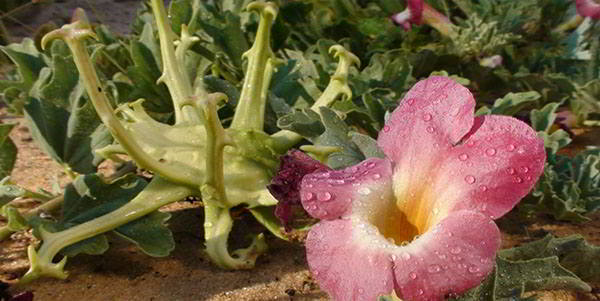
Although the name would suggest a poisonous plant, the Native Americans used it to heal various conditions, from treating fever to soothing skin conditions, improving digestion, and treating arthritis. The tea can reduce the effects of diabetes, while a concoction made from the plant’s roots reduces swelling and helps with joint disease, arthritis, gout, back pain, headache, and sores.
In addition to its medicinal uses, Devil’s Claw was also valued for its anti-inflammatory and pain-relieving properties, making it a natural choice for those suffering from muscle aches and chronic pain. Today, modern herbalists continue to explore its benefits, often recommending it as a complementary treatment for arthritis and other inflammatory conditions.
Bring Back Tradition With These Healing Remedies
Although it is always wise to consult a doctor before trying any of these Native American remedies, it is important to recognize the role that nature can play in alleviating a wide variety of health issues.
Consider giving some of these Native American remedies a try – although history has made us forget about some of them, they may prove to be just what the doctor ordered.
You may also like:
 How To Turn Your CB Car Radio Into A Powerful Transmitter
How To Turn Your CB Car Radio Into A Powerful Transmitter
10 Medicinal Plants You Should Never Plant Together (Video)
What Is The Closest Amish Market To Your Home

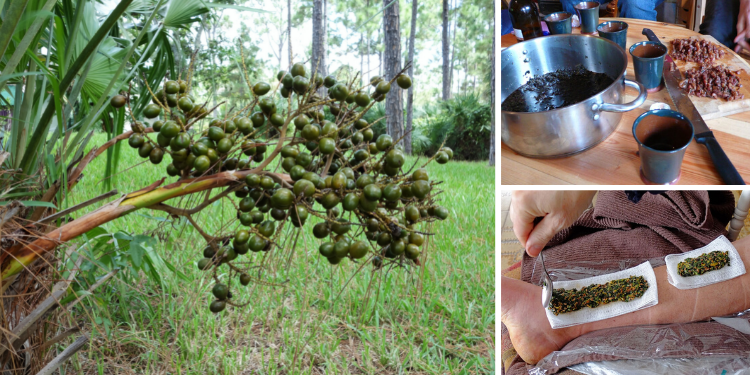




















Oregano eye drops also is a cure for headaches
Nicely done article
Florida’s Saw Palmetto plants are defined as “Commercially Exploited Plants”. Florida Statute 581.185 (c) makes it illegal from for any person to harvest Saw Palmetto berries without permission of the property owner AND a permit.
It’s time to stop obeying some controlling laws. Florida has a crazy amount of saw palmetto plants and in the county where I live, they routinely hold prescribed burns and also pay people to clear cut, which temporarily destroys most of the saw palmetto plants. I suspect that the reasoning behind the law is that the government can’t collect tax money from people who pick the berries.
Staghorn Sumac (flowering and seed head)
make a lemony tea.
Health asset ?..unknown.
Several decades ago, in my 20s or 30s, I read about using the red berries sumac, and discovered it made wonderful “pink lemonade ” Being in hot Ga., I began guzzling pitcherfuls, as I had read it was a native American drink. Evidently, it should be used in moderation. I noticed while driving that my depth perception was pretty much gone! I also noticed that there were tiny spiders in the tightly formed berry clusters that couldn’t be removed, so I decided to give up sumac lemonade, as tasty as it was. Depth perception came back.
Most of it does not grow here. We have wild tobacco, calendula, and a thousand other things. Oregano, yes, but it needs to be cut or can harm. Yucca is great for anything external. Boiled, it’s pretty tasty, and considered medicinal, too. niio
agree, I grow various herbs like rosemary, oregano, mint, basil, thyme, and also blackberry at home, but the rest is not readily available.
My area is naturally a high desert but has been artificially propped up with irrigation water. The snow pack that feeds the irrigation canals is not as abundant as it has been so the warning is out that the irrigation season will be cut short. Some of the local farmers are considering what to do and if they can plant crops that utilize less water.
Last year when the irrigation water was cut short, the calendula did okay. The blossoms were somewhat less abundant than during years of enough water but still bloomed.
Sage, that is why I’m trying to learn more about drought tolerant plants like tepary beans and amaranth, not enough water down south either.
Sage, I want to try quinoa also, but I have limited space and time so I’m focusing on what I can handle. Some things work out well, others I haven’t figured out, and some I gave up on for now, like broccoli, I can get it to grow, but as soon as it starts to produce heads it bolts into sprawled sprays and then flowers. I have gotten a very few florette’s, but it’s not worth the time and effort so I am focusing on what is growing well here, like potatoes, sweet corn, garlic, peas, long beans, tomatoes, green onions, grapes, blackberries, several herbs, and so on.
dz, I planted a little bit of amaranth a couple of years ago. I ended up some very well fed birds in my yard and no amaranth on my plate. You are right about it growing well with a lack of water and, on my end, not much care.
Sage, I grew Swiss chard last year and it grew very well, but no one likes to eat it, so I have not planted any more. The same with radishes, they grew well, but no one likes them, so I’m not planting any more radishes.
I make swiss chard or beet greens regularly. They both are a huge pick-me-up for me. I just make them for myself. I prepare them by, cutting out the stems and then slicing the stems into short pieces. I then cut the leafy part into strips. I sauté some chopped garlic in oil. The stems are added first to the pan, to cook longer to soften then the leafy part is added. Very yummy and better than a vitamin pill.
I haven’t tried broccoli as I am not that attentive of a gardener so I am sure that it would bolt on me too.
Red,
I have never tried to grow oregano so I haven’t researched it at all. What do you mean when you say that it needs to be cut or it is harmful?
Yucca is something I have never tried. Is it gelatinous? It might be what I have seen in the markets. If it is medicinal, what benefits have you found that it gives?
Here is one more question. I hope you don’t mind. In order to conserve water, have you tried using buried clay pots, Ollas? I have a few unglazed pots, though they’re wide topped, I am considering using.
All the best to you.
Sage, I grow two varieties of oregano, one from purchased seeds with thin leaves, and the other from cuttings my wife brought home that has thicker leaves and does better here than the thin leafed variety, and don’t know what red means by having to cut it or it is harmful. I grew, dried, and ground a couple bottles worth of well-trimmed, washed, then thoroughly “dried until brittle” of the thick oregano leaves (no stems, no roots) last year and gave some to my family in Oregon when we visited last year, and I have not heard any complaints from anyone.
Sage: Not a lot of seed from each amaranth. Like any grain, it needs a field to do well. But, leaves are great–if you like the taste of spinach. Birds are spreading seeds as far as ants will allow. Harvester ants, not birds here destroy a lot of seeds. The wild sunflowers did not come up this year in the south bed, meaning harvester ants carried off the seeds. But, the ants are not part of the soil fertility. A little borax (plus sugar or flour) goes a long way.
Oil of oregano has to be cut with a carrier oil or it’ll burn badly. Oregano tea should be all right, but all things in moderation. Oregano is a medicinal used as an herb. In large doses, like the oil, it’s toxic.
https://www.webmd.com/vitamins-and-supplements/oregano-uses-and-risks
Yucca: Other than as a very expensive soap, not a lot of people know the plant. Unless thinning plants, please drop the top in the hole and plant it. Yucca is a starchy tuber. Boil or steam, and if you want the soap (considered the world’s best for skin issues) peel it and use the peelings. Then drop them out for the rats to die from (saponin). Before feeding any part of a root to an animal, cook it. Boiled of steamed, use like chestnuts in dishes, or dry to grind for yucca noodles and so on. This is not yuca, cassava, but is often used the same. Cassava had small quantities of cyanide while yucca has saponin.
https://www.healthline.com/health/health-potential-of-yucca
http://www.naturalmedicinalherbs.net/herbs/y/yucca-glauca=soapweed.php
And I found this! https://nativeplantandseed.com/ they sell rice grass seed by the pound. Rice grass is a wild rice but demands dry soil. Sandy is the best. It grows from Central Canada deep into southern Kali and south. It might be worth a try, planting it in a field or empty lot.
You mean watering jugs? I do like the Tohono and dig the caliche out, then replace with brush and logs to create humus. The main problem doing that here is ponderosa and other pines are most common, and they can take a few years before anti-fungal tannin breaks down enough to allow them to rot. But, the garden grows. niio
Red,
Thank you for such an informative response! You have given me much to ponder.
All the best.
Use the ollas from what I’ve heard on here if you place enough of them you have a chance for your garden to survive in a low water areas.
I have not tried the yucca root for medicinal, herbal uses yet. There were a few clusters here when I moved, I suppose brought by previous owner. I have transplanted some, and find it difficult to change one’s mind about that, as you can never mattock it all up. And those spines are something else! But when I do dig some pieces, I find you can throw them down most anywhere, and they usually take root. You can even cut off chunks of a growing rootless plant, and throw down, with some success. Even in the woods, as long as some sun peeps through. I am slowly working on an impenetrable hedge on my property line between me and a neighbor who has just finished his 5th prison term, mainly for thefts.
Rosemary, red clover, and ashwaganda are old world plants brought here by Europeans. No doubt Indians included them in their medicine and cooking, but those three have traditional uses throughout the world. Rosemary is a mint, red clover in the pea family, and ashwaganda a nightshade so all 3 would be similar to common new world medicinals. Sumac grows all over the world and the seed is a foundational flavor in several cuisines. Flame leaf sumac is common here, great tea, great wildlife plant. Greenbrier is especially useful since it it is so common, tuber a good source of starch and original source of root beer, said to have use as a steroid supplement. Tenting up in the Ouchitas last week saw red clover on all the roadsides, what a unique color. Gray squirrels thick, almost jumping in the pot of red beans and rice my girl cooked up. Lots of people looking at Eastern Arkansas for TEOTWAWKI these days.
I’d always heard that sumac is poisonous.
That was also the rumor when I was a kid many decades ago. In fact we called it poison sumac. That had an air of certainty to it like poison Ivy or poison oak. The lead-in adjective says it all.
That is a different type sumac that we do not have down south. You want the wild sumac with red berries, not white.
I love finding sumac when I’m hiking. Sweet and tart. Even the fuzzy kind. Poison sumac (which isn’t an actual sumac, just looks similar) has white berries, like Pam Kinsey said. I heard it makes a great pie, but mine never makes it home.
This site’s store has an interesting packet of very useful plants for herbal healing. The price for each seed packet breaks down to be equal with quality seed supplier plus it comes with an instructional booklet.
There is a poison sumac, a wetlands shrub with WHITE berries. This truly is poisonous is ingested. The staghorn and smooth sumac are safe to use; I’ve made tea from both. I still don’t know if the winged sumac is safe to use, and that is what grows here. So, if it has sumac’s compound leaves but WHITE berries/fruits, it is poisonous.
That is why it is SO IMPORTANT to give the Latin names to all plants mentioned in a post (NOT just the ‘common’ name): so you won’t get something that was not intended: many plants have ‘nicknames’ that are used locally, that mean one thing in Ohio, and another in Maine or Oregon…
So, PLEASE, when writing these posts include the Latin name of plants or herbs you are referring to.
I used to dig and dry wild blackberry root to keep on hand to brew for a hot tea to treat uti. Worked pretty good, and mild earthy taste was pleasant. Blackberry grows rampantly here, but most has few berries, or they are hard seedy knots.
Pam, My folks had place that bordered a river in a rainy area with beautiful black soil. The blackberries grew endlessly with no effort, in fact, I spent quite a bit of time cutting pathways through the brambles. Most of the berries were a common variety but further down the river and in an area that not too many people went to, a very distinct variety grew. The blackberries had an extra flavor, similar to cinnamon (maybe). My goal was to pick some of those berries but I stopped and turned right around when I saw that the grasses in front of that bush were crushed about the same dimension as a bear on all fours would make. I also noticed that the berries were all eaten from about 2 feet to about 4 1/2 feet in height.
I found it interesting that a bear would find that particular blackberry tastier too, just as I did.
Sage, in Oregon there is a very tasty variety of blackberry called “Marion Berry”. My grandma used to work at the old Marion Forks Lodge on the Santiam Pass in Orgon and made pies and jam from the Marion berries that were truly excellent and sold in the Lodge Cafe/Bakery. Marion berries are very common now and worth getting a start or two if you live anywhere from the coast to the Cascades and should do just as well in Washington as they do in Oregon. I don’t think they will do well east of the Cascades where it is just too dry, unless you water them regularly.
dz,
Maybe it was a marion berry that the bear liked. A weak looking black berry runner came under the fence from my neighbor’s. Last year, it produced less than a dozen berries. It is under a huge locust tree so, that might be why it’s not doing well or it just gets cooked in the 100 degree plus days.
My folk’s place was in western Washington, where watering plants was not a regular need. My father dug out a pond that was fed from a natural spring in the hillside and he dug a drain down to the river so the pond water circulated. He then stocked the pond with lovely big trout. With all the rain, river water, natural springs, the black berries just grew and grew.
I am sure that your grandma made a lot of people happy with her pies and jam.
We USED to have wonderful wild blackberries in the area. When I was young, Mama and I picked 2 5 gal buckets at a time. My mouth would be dyed purple, and Mama laughed and said I had already canned them. We made the most wonderful pies. But sometime around the 80s, a blight came through, and now I still make an occasional pie, if we get enough rain, but I call it crunch berry pie. Huge seeds, but edible, barely.
Sage, really! Bears ate just gentle woodlands critters. All they ask is some love and big, big hug! Ask a liberal neighbor to do it for you so you know how to do it right. niio
Sage: I’m in AZ, and while we’re too hot in this area for raspberries, blackberries thrive. If the vine has problems living under the tree, the the tree is stealing too much water and nutrients. Blackberries should do better in the south and southwest than up north. Columbia, which I wish I could raise, is fro the tropical hills of Columbia and noted as the biggest and one of the best eating. niio
red, blackberries thrive better in the Northwest than they do down here. They are so prevalent growing wild in some areas they are invasive, and people either get goats to eat them down to the ground like my sister did, or dig and even burn them out if no goats are available. My nephew has goats on his homestead that keep back a lot of the unwanted brush, including poison oak, but you have to tether or fence them out of your food producing crops, even from fruit trees because they will strip bark off of trees if it tastes good to them.
dz:2 crops a year? Primocane and others can do that in the southwest and South. In wet areas, they tend to suffer fungal diseases. niio
red, key words: “growing wild”, and “invasive”, although people that do intentionally grow blackberries know to keep them under control, the same as with mint. Here’s a phrase to remember about blackberries and mint in the Northwest – “let them go, and they take control”. My sister now has tomatoes and onions growing wild around her house from garden plants that went to seed and grow back in the spring, so she never plants them anymore, just harvests what she wants and leaves the rest to mother nature.
dz: Yeah, invasives are a big issue all over. These are not native berries? But only one crop a year? I allow the blackberries here to do what they want, giving minimum care. You’re talking goat brush, I’m not. I remember blackberries thrived in Penna, too, but after a warm winter a lot of them would die off from root rot bugs, and so on. yes, they did well, but fungal diseases are always an issue.
Mint does best where it gets plenty of calcium, so it wasn’t a major issue there. Here, spearmint does well, peppermint tends to die from the heat. niio
Sage, if the runner has enough vine under the ground on your side of the fence where you can reach, you may be able do an exploratory dig under it and if the section has roots, snip it off as close to the parent plant as you can and replant in a container or a more open area, but you’ll probably have to water it regularly to keep it alive, at least for the first year or two until it’s well established.
Hey dz, somewhere you mentioned disappointment in broccoli bolt. Didn’t catch where you are from, but here in zone 8a, used to be 7b, Athens Ga area, that is a cool weather crop. Will only work for fall garden, and a maybe for early spring. Youd need to buy plants to set then, or else start seeds indoors or in greenhouse. Cabbage, cauliflower also. Even greens and radishes are going to get bitter when hot weather hits. On the other hand don’t plant tomato plants or melons till it’s pretty warm. Cilantro is the one thing that bolts as soon as it’s up for me. Spread some seed that didnt come up in fall. surprise, they came up during winter. So ,I’ve clipped tops for the freezer, and yes, already blooming, so fixing to bolt. Then you have coriander, which is the seeds
thanks Pam. I am discovering my planting schedule is several months off for many plants, mostly what I should be planting in the Fall instead of in the Spring. Some of my plants managed to winter over, like my tomatoes, eggplants, and bell peppers, so I trimmed off the dead and straggly looking parts and am watching to see how they recover. They all have new growth, and the eggplants and tomatoes are flowering but the bell peppers don’t seem to be doing very well. Since these like warm weather, I may plant some seeds and compare the new plants to the wintered over plants.
red shared this excellent link with very user friendly “what and when to plant by month” guides based upon Zone and you can select each month to help planning your planting schedules.
https://www.gardenate.com/
red, I don’t know if the wild blackberries in Oregon I was picking berries from every summer were native or not, but definitely growing wild, with thickets at least 10-20 feet deep that we sometimes would cut into with a hatchet and pruning shears to get berries from deeper in, and not sure how tall but way over my head. No one tended them or watered them, they would grow along the sides of roads, in vacant lots, and just about any other open area that no one was tending. I think they only had one crop per year because of the weather patterns. One of my chores was to dig up any blackberries I saw growing around our house. You get summer monsoons that most other regions don’t get so you may get a second batch of several species because of the second dose of water. We don’t get the monsoon rains here because we are on the west side of the mountains, and the only thing I have right now that produces more than one batch of fruits per year is my Myers lemon, which produces fruit three times a year as long as it gets enough water. I have strawberries that are supposed to produce two times a year, but they are babies, so I have yet to see how they produce in my climate and inexperienced care.
We are not disagreeing. Up in your old stomping grounds, Himalayan blackberries are a major problem. From what I found, they came in around 1870 (Seattle) and went wild. That area’s idea of a drought is the sun came out for 3 hours, LOL. Yes, everything grows like wild there, including native cactus, but everything also suffers from a lot of diseases and so on. But, this means crowns may live 7 years or longer, not the 40 we expect from them.
Rain is fertilizer, and all things do best when it rains. T-storms produce negative ions and every living thing likes that 🙂 In PA, in the hills north of Philly, when brambles came up in the yard, they were mowed off and usually died in winter. For that matter, rose cane borers prefer brambles to roses. There’s a dozen things that will make any bramble lose production and kill it. Things like blueberries and so on, west Oregon shines.
Yeah, we hope we get monsoons. Right now, Kali is getting far more moisture than we did all winter. Our frost-free growing season is from late March into November, sometimes late December. Yours is about that, and here, plant anything in the cabbage family in September.
What variety of strawberries? I have Albion and another, both supposed to produce well here, but the winter was too warm. niio
for everbearing strawberries, I am trying seascape, quinalt, and a third variety that just says it’s an everbearing variety.
dz I checked Zone 10, warmer than we are, for recommended varieties.
https://www.gardenate.com/plant/Strawberry%20Plants?zone=15
Even Hawaii has varieties now!
https://strawberryplants.org/strawberry-varieties-by-state/
One strange thing, Phoenix, Arizona (zone 10) used to be famous for the quality of strawberries. A blight hit and wiped out the industry. Mine are beginning to send out runners, but not a bloom in sight. i’ll check on Seascape. niio
red, I think the third variety of strawberry I am trying is Sequoia. My strawberry starts are from last year’s runners that survived over the winter, and now they are all mixed together in no particular pattern or order, so it will be “survival of the fittest”. Some are flowering and have a few tiny berries showing, some just have leaves, and one died – probably from overwatering since it was right next to some newly planted seeds I watered at least once or twice every day. With limited room and time, I am focusing on what will survive and produce. After I learn enough about HOW to grow everything, such as timing, locations, proper watering and pest controls, I might focus more on volume and companion planting, but for now if I can grow things my family likes to eat, that’s a good start.
red, I replanted more carrots seeds, and these are sprouting, it might be the temperatures, might be the watering, maybe both, but I have lots of carrot seedlings emerging. The two red onion starts from the center sprouts I cut out and rooted are both sending up a flower stalk, so it looks like I might get some red onion seeds after all. I replanted my sweet corn and a few more spouts have emerged, but something keeps poking around in the soil and might have eaten more seeds and sprouts, and it’s not the dogs or gophers. I have seen crows and jays perched on my fence this last week, so I suspect they are the culprits.
red, our current annual rainfall amount is half what it should be. If I had to depend on natural rainfall for growing edibles, I would have to drastically change to drought tolerant varieties like beans and Jerusalem Artichokes and try growing any greens, potatoes, carrots, peas, and squash over the winter and maybe into very early spring. My tomatoes, eggplants, and bell peppers survived the winter, but I doubt they would survive without me pumping water on them. I would expect everything to die off from July through October from the heat and lack of water.
red, the link you posted is excellent! Thanks, I really like the planting calendar, it shows how far off my timing has been. I’ll definitely use this for future planning.
https://www.gardenate.com/
dz: keep teaching me! My strawberries can’t seem to get enough water. I need to add more sulfur to the soil. while they look good, well-fertilized, it won’t hurt. Summer is harder than winter. They’ll need shade cloth soon.
I might start some carrots, but likely not. They get bitter in the heat. And, too many ground squirrels are around. Funny thing is, there’s one in a bed by the pine tree that’s been in bloom for 2 years. I hope the seeds are good!
No sign of the onion sets, yet. But, yeah, there’s always birds spying on me in the garden. One pulled up some beans transplanted in a trench, but figured out it was wasting its time. Now there’s another packrat in the house. It are the tops off a lot of chili seedlings. This is getting monotonous. But, we have till November. Most things will not produce till July and the monsoons, anyway. niio
No rain expected from March thru July, so yeah, keep that hpse handy. Even tepary beans and chiltepin like a good saking now and then. I’m keeping fingers crossed that I have a ton of chilacayote and calabacita squash stored by November. Seeds from both are very high in protein, and both are high in sugar.
Punta Banda tomatoes are drought tolerant and good eating. They were found growing in fields of a village in Baja abandoned 20 years before. I have some Texas wild cherry and Porter producing well. Neither is a water hog. If you look at Israeli ag sites, you may be able to find veggies that can be raised on sea water. does carob grow in your ‘hood? You can plant the trees out front, but roots need protection from rodents. People use wire baskets for that. Carob is supposed to be close to a perfect food. A plus, if kept dry, like mesquite, it can be stored for decades.
The shots for allergies worked for a while. this week, 3 more. Each time they should work longer till the problems are resolved. That means less infections and more energy. Laws, I might even run to New Mexico this fall for a few hundred lbs of roasted chilis and fresh red ones. niio
red, I had an uncle in the Madras / Metolius area of Eastern Oregon (just on the east side of the Cascades) where summer temperatures normally are in the 90’s and often over 100, that grew peppermint, sugar beets, potatoes, and sometimes a few other crops like onions, but had to use a lot of irrigation water to do it. He had his own “distillery” and several specially designed “dump trucks” for extracting the mint oil. The mint would be harvested and loaded into the bed of the truck, the truck would pull into a stall of the distillery, and a “lid” was lowered onto and clamped down on the bed, very similar to a pressure cooker lid. Then very hot steam was pumped through the lid into the mint., distilling the mint oil from the plants, then the water and mint oil mix would be drained from the truck bed into large separation tanks. The mint oil would float on top of the water, and both would be drained as needed, the oil into drums, the water into a discharge “creek”. The majority of the mint oil would be sold to Wrigley’s for gum, and sometimes to candy makers.
Yes, and if we averaged nighttime temps like they do in eastern Oregon, we could raise all that, as well. Even Idaho spuds don’t produce well in my area and those taters are tough. Our temps can hit over 100 every day for weeks, and nighttime lows in the 90s. Cactus will wilt in temps like that, LOL.
Had I greenhouse, I could raise peppermint on gray water. Peppermint is supposed to be more resistant than spearmint to heat and drought. But, mine needs to be replaced. Your uncle is into a good thing, and may his profits always rise. yeah, I know about distilling. uncle Dimey distilled peppermint for my great-grandfather, a medicinal, then cooked off rye or a wheat brew for old-school peppermint schnapps. niio
red, my parents and majority of aunts and uncles have all passed away. I would like to know what they knew, but it’s too late to ask, so I am trying to learn more from other sources combined with trial and error.
Out of 6 siblings on one side and 9 on the other plus ‘in-law kin’ I have two left, an aunt and an uncle. I used to be bitter about being asthmatic as a little kid, but a whole lot of time was spent in the kitchen or back porch hanging out with the folks and grandparents. If I tried real hard, I could remember dirt on folks who passed away a century before I was born. As for learning new things, we all suffer that. If I live to be 100, I’ll never have the combined knowledge and wisdom of those people. You’ll feel a sense of déjà vu at times, when a faint memory of what the elders said becomes your thoughts.Keep walking as you are and in time all things are yours.
Meanwhile, there’s a very strong stench of rotting cucumbers on the back porch, so the porch door can stay open. Nothing stinks worse that that. what would the braukor, my great-grandfather, say? They only take small bite (but very telling ones LOL!) No, I’m not going snake hunting. I may leave her some warm yogurt, but don’t want her fighting with the dog over it. The old one converted his milk to butter and yogurt, then to cheese, and would leave bowls of whey out for them. People were convinced he had the power to call up vipers, and rarely was anyone stupid enough to raid him, even when he was in his 90s. Just havin’ too much fun. niio
Red,
Thank you for such an informative response! You have given me much to ponder.
All the best.
Here, the deer are quick to nibble on anything tasty, from plants in the woods to some I’ve planted; the only vegies that reach maturity are things they don’t like lol.
Thanks for all the great information. Here’s just one of the links for drought-tolerant vegetables https://gilmour.com/drought-tolerant-vegetable-garden
Robin: we have Indian rush peas growing all over. A legume, rabbits will eat them to the ground.
I have a dog that loves watermelons, but steals them when very small. a dusting of DE keeps him off them. I have seeds for Beta Alpha cucs and may plant them for him.
If you can, try to get i’itoi bunching onions. Right now they’re dying back as the summer drought sets in, but one in good soil can divide up to 50 times. The greens get chopped and dried, and the root plus a half inch or so of bulb is planted in a new spot. Native seed search carries them, when you can find them. they’ll be harvesting bulbs this month. No clue how far north they can be raised, they’re a Tohono thing.
Tohono peas do well all winter with little or no extra water. Tepary shelling beans, as well. But, scarlet runner bean often dies when temps begin to hit up into the 80s.
squash, calabacita and chilacayote both tolerate heat, wind, drought. Calabacita is a runner, not a climber. Best spot for chilacayote is up in the trees. Both resist borers and most diseases probably because they were never ‘improved’. Wild tobacco, a native, will grow till it’s roots run out of moisture, then goes dormant.
Desert native maize resists drought by not growing as tall as it would in a wet year (16-24 inches of rain). On very rare occasions, we find wild maize, but very rarely (it’s native to Mexico). that doesn’t need to be irrigated. niio